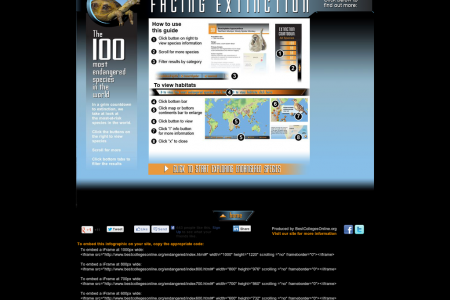
Loss of Biodiversity
LOSS OF BIODIVERSITY "No longer do we have to justify the existence of humid tropical forests on the feeble grounds that they might carry plants with drugs that cure human disease. Gaia theory forces us to see that they offer much more than this. Through their capacity to evapotranspirate vast volumes of water vapor, they serve to keep the planet cool by wearing a sunshade of white reflecting cloud. Their replacement by cropland could precipitate a disaster that is global in scale." -James Lovelock Threat of extinction 1 out of 4 conifer species are threatened with extinction. 1 out of 8 bird species 1 out of 4 mammal species are threatened with extinction. are threatened with extinction. 1 out of 3 amphibian 6 out of 7 marine turtle speciesa are threatened with extinction. species are threatened with extinction. -75% of agricultural crop genetic diversity has been lost. 75% of the world's fisheries are being fully or overexploited 70% of the world's known species may face extinction if the World's temperature rises by more than 3.5°C 1/3 of reef-building 90% of the wet lowland forests in western Ecuador has been cleared in the past 40 years. The clear-cut former forests used to be home to corals around the world are threatened with extinction. Coral reefs are home to innumerable species. 90% 10,000 species of plants, 25% of which existed only in Ecuador. Climate change and habitat loss threatens the existence of at least 25% of all species on land by the year 2050 if current trends continue. Some studies even suggest that 25% of all mammal species could be extinct in just the next 20 years. 25% 25% "Lumpers" The Great Potato Famine in Ireland is a prime example of the importance of genetic variety and biodiversity. The famine devastated Ireland's population and economy between 1845 and 1852. one in eight Irish people died of starvation in three years during the Great Famine Ireland The Irish depended on a single variety of potato, "lumper", f most of their diet. A single infestation was able to spread quickly and wipe out large percentages of their food supply because of this lack of biodiversity within their crops. or Over the last 100 years, decreases in biodiversity have been increasingly observed. Estimates are that up to 30% 30% of all currently living species Of these, about 12.5% of known plant species are threatened with extinction 12.5% will be extinct by 2050. Some credible estimates go so high as 140,000 species lost forever, every year. Variety is the spice of life, and biodiversity is the spice of Earth. The intricate web of ecosystems and habítats on the planet inhabit an equilibrium, a fine balance, and when we lose biodiversity we lose possibilities. Care to spread your eco-friendly knowledge? Start by sharing this infographic. Brought to you by: DistanceLearning .com Sources: http://www.globalissues.org/article/171/loss-of-biodiversity-and-extinctions http://wwf.panda.org/about_our earth/biodiversity/biodiversity_and_you/ http://chge.med.harvard.edu/topic/climate-change-and-biodiversity-loss http://Library.thinkquest.org/17456/lossall.html http://en.wikipedia.org/wiki/Biodiversity http://en.wikipedia.org/wiki/Genetic_diversity
Loss of Biodiversity
Source
http://www.d...fographic/Category
EnvironmentGet a Quote







